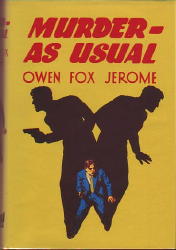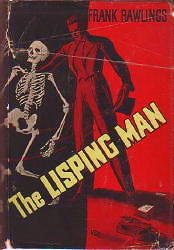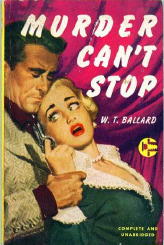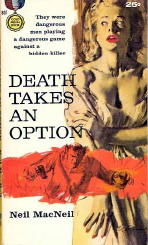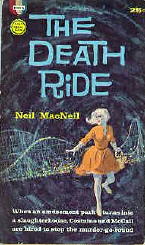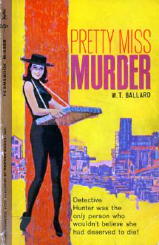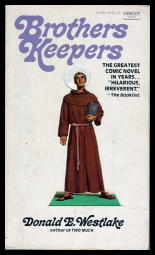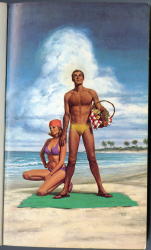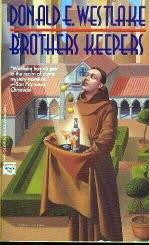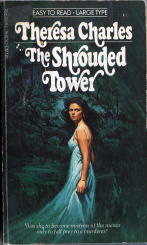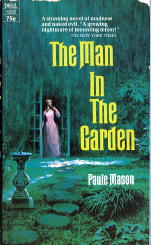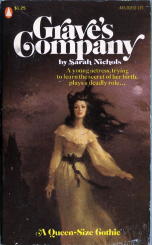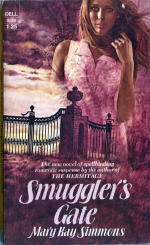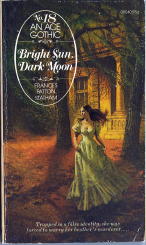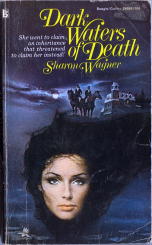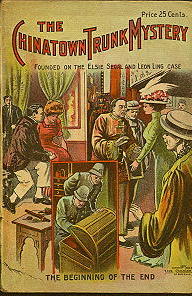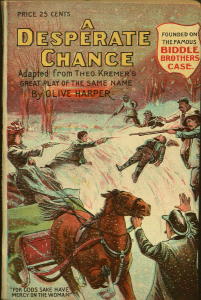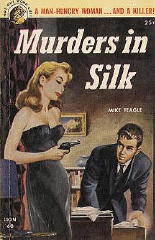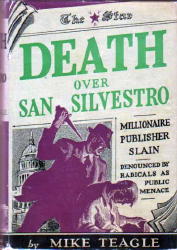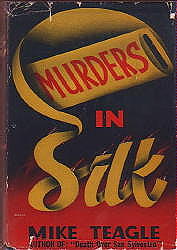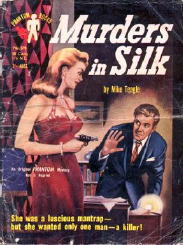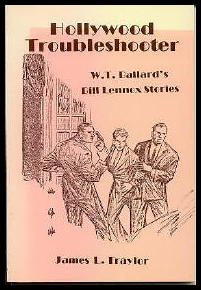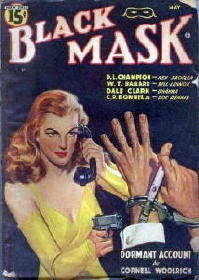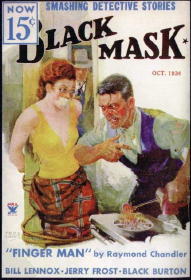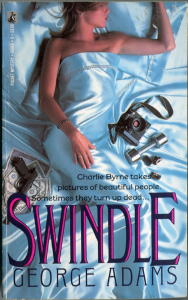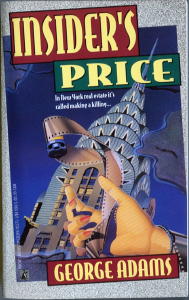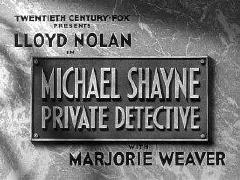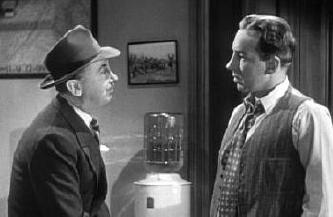LIGHTS, CAMERA, MURDER – John Shepherd.
Belmont 215, paperback original, 1960.
This book is advertised on the front cover as “a new Bill Lennox mystery – over 1,000,000 copies sold.” That might have puzzled many a would-be buyer, trying to think back as to when he’d seen a book by John Shepherd before. And to tell you the truth, he wouldn’t have, as this was the first book that John Shepherd ever wrote.
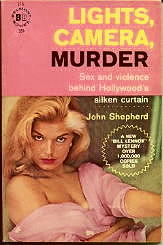
I’d better take that back. John Shepherd is a common enough name that it could have easily been the byline of plenty of books. In the interest of utmost accuracy, I’ll rephrase what I just said. This was the first mystery that any John Shepherd ever wrote.
What about Bill Lennox? Was he a mystery character who’d be immediately recognized as a hot sales commodity in 1960? He could have been, but if you’d like my best guess, probably not. Bill Lennox had last appeared in mystery form a mere six years before, in a book called Dealing Out Death, published as a paperback reprint in 1954 by an obscure company called Graphic Books. The byline? Not John Shepherd. The byline for Dealing Out Death was W. T. Ballard. It would have taken a lot of rather esoteric knowledge on the part of a would-be buyer before this book would have snapped up off the newsstand on the basis of this particular sales pitch.
Of course, maybe you know all of this, and I’m berating the unberatable, not now, not almost 50 years later. (And by the way, my spell-checker doesn’t know that word either.) Both Bill Lennox and W. T. Ballard have come up for discussion here on the Mystery*File blog not too long ago, mostly, as you’ll recall, in relation to his pulp magazine appearances in Black Mask between 1933 and 1942.
As mentioned then, but it’s worth repeating now, when he stopped writing about him for the pulp fiction magazines, Ballard took his character over to book-length hardcover cases, but unlike Erle Stanley Gardner, neither he nor Bill Lennox managed to succeed very well in making the transition. While putting together a more comprehensive, detailed list of the books that Bill Lennox, the Hollywood trouble-shooter, appeared in, I decided to go all out and using Al Hubin’s Crime Fiction IV as a guide, come up with a list of all of Ballard’s crime fiction in book length form:
The Bill Lennox books:
Say Yes to Murder. Putnam, 1942. Penguin 566, pb, October 1945. Reprinted as The Demise of a Louse, as by John Shepherd. Belmont 91-248, pb, 1962.
Murder Can’t Stop. McKay. 1946. Graphic #26, pb, 1950.
Dealing Out Death. McKay, 1948. Graphic #72, pb, 1954.
Lights, Camera, Murder, as by John Shepherd. Belmont 215, pbo, 1960.
The Tony Costaine/Bert McCall books, as by Neil MacNeil:
Death Takes an Option. Gold Medal 807, pbo, September 1958.
Third on a Seesaw. Gold Medal s844, pbo, January 1959.
Two Guns for Hire. Gold Medal s898, pbo, July 1959.
Hot Dam. Gold Medal 964, pbo, January 1960.
The Death Ride. Gold Medal 1005, pbo, November 1960.
Mexican Slay Ride. Gold Medal s1182, pbo, January 1962.
The Spy Catchers. Gold Medal d1658, pbo, 1966.
The Lt. Max Hunter books:
Pretty Miss Murder. Permabook M-4228, pbo, December 1961.
The Seven Sisters. Permabook M-4258, pbo, October 1962.
Three for the Money. Permabook M-4297, pbo, November 1963.
Non-series books:
Murder Picks the Jury, as by Harrison Hunt. [Co-written with Norbert Davis.] Samuel Curl/Mystery House, 1947.
Walk in Fear. Gold Medal 259, pbo, September 1952. [Based on “I Could Kill You,” a story that appeared in The Shadow magazine in 1948.]
Chance Elson. Cardinal C-277; pbo, November 1958.
Age of the Junkman, as by P. D. Ballard. Gold Medal d1352, pbo, 1963.
End of a Millionaire, as by P. D. Ballard. Gold Medal d1486, pbo, 1964.
Murder Las Vegas Style. Tower 42-778, pbo, 1967.
Brothers in Blood, as by P.D. Ballard. Gold Medal T2563, pbo, 1972.
The Kremlin File, as by Nick Carter. Award AN1165, pbo, 1973.
The Death Brokers, as by P.D. Ballard. Gold Medal M2867, pbo, 1973.
After World War II, W. T. Ballard seems to have been more successful in writing westerns than he was with his mystery fiction, but I haven’t taken the time to do any research in that particular direction. And this review is nominally of Lights, Camera, Murder, so let’s get back to that, shall we?
Sadly to say, however, and I’ll say this upfront, this is a book that’s little more than ordinary, and in some ways less. It is, after all, as Bill Pronzini has pointed out to me, a book that was published under a never-before-used pseudonym and put out by a second-rate publisher. On the other hand, I read the book all the way through, and I can’t say that about every book I pick up to read.
The greatest appeal this book probably has today is to completists: those who want every Bill Lennox story there is to read; or those who want every novel that W. T. Ballard wrote; or simply those who collect everything that Belmont ever published. (These completists have been arranged in order of decreased (although not negligible) likelihood. My spell-checker doesn’t recognize the word completist either, but we know you’re out there, don’t we?)
To begin at the beginning, though, the story begins when Lennox is called upon to salvage a movie that’s in production down in Mexico, where one of the leading male stars has been found knifed to death in his room. The leading female star is in jail for the crime, having been seen leaving his room quietly the night before. This is the kind of disastrous situation in which a legendary trouble-shooter is always called upon to save the day, and quickly.
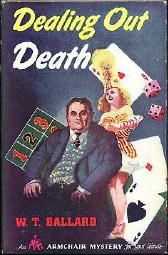
In quick order we are re-introduced to Sol Spurk, the head of the studio and the only man that Lennox reports to. In the pulp stories, though, I am sure he spelled his last name as Spurck, and sure enough, on page 97, it is spelled that way too. We also meet Lennox’s steady girl friend, a movie columnist named Nancy Hobbs, although very briefly. Their relationship is a loose one, meaning that neither places any restrictions on the other.
Which is a good thing, one realizes quickly on, as Lennox does not offer much resistance, first of all, to the leading star (Sylvia Armstrong) who is in jail for the crime she did not commit, or so she says, even though she was seen leaving his room during the night the murder was committed. Since she is in essence a victim of nymphomania, perhaps what she says may not entirely be the truth, even though the dead man was said to be homosexual.
But it is the beautiful and unsullied Candy Kyle, new to motion pictures, motion picture making and motion picture people, whom Lennox finds himself falling for. On her part, she serves as his assistant in crime-solving by keeping tabs of people, knowing where they are or should be, being shot at together, and being rammed on the open sea by power craft together.
This is, as you fully well realize, the way that bad guys have of warning detectives off. It is also the approach which of course never works, even with high rolling gamblers and drug kingpins calling the shots, and is rather typical of the clichés and not-very-involving story line that ensue as soon as Lennox crosses the Mexican border.
Lennox’s past, which began back in 1933, as you may recall, has been updated into the TV era and the age of beatnicks (sic) and the aforementioned drug-pushing industry. On page five, past history irregardless, it is said that he has had a ten year’s tenure working for Spurk. The usual time compression procedure is at play here, and don’t get me wrong. It’s happened to the best of fictional detectives, from Perry Mason, Hercule Poirot on down, though perhaps their creators were less blatant about it.
The plot itself is not very interesting, as I suggested before. If anything, I was more interested in the players themselves. Even though some come from solid stock companies, some, including Lennox, came to life, including Candy Kyle, and some more than others.
Speaking of which, the ending is a wowser, one of those endings that really make you wonder what is going to happen next. Except, of course, there was no “next.” This is all he wrote.
— June 2007
